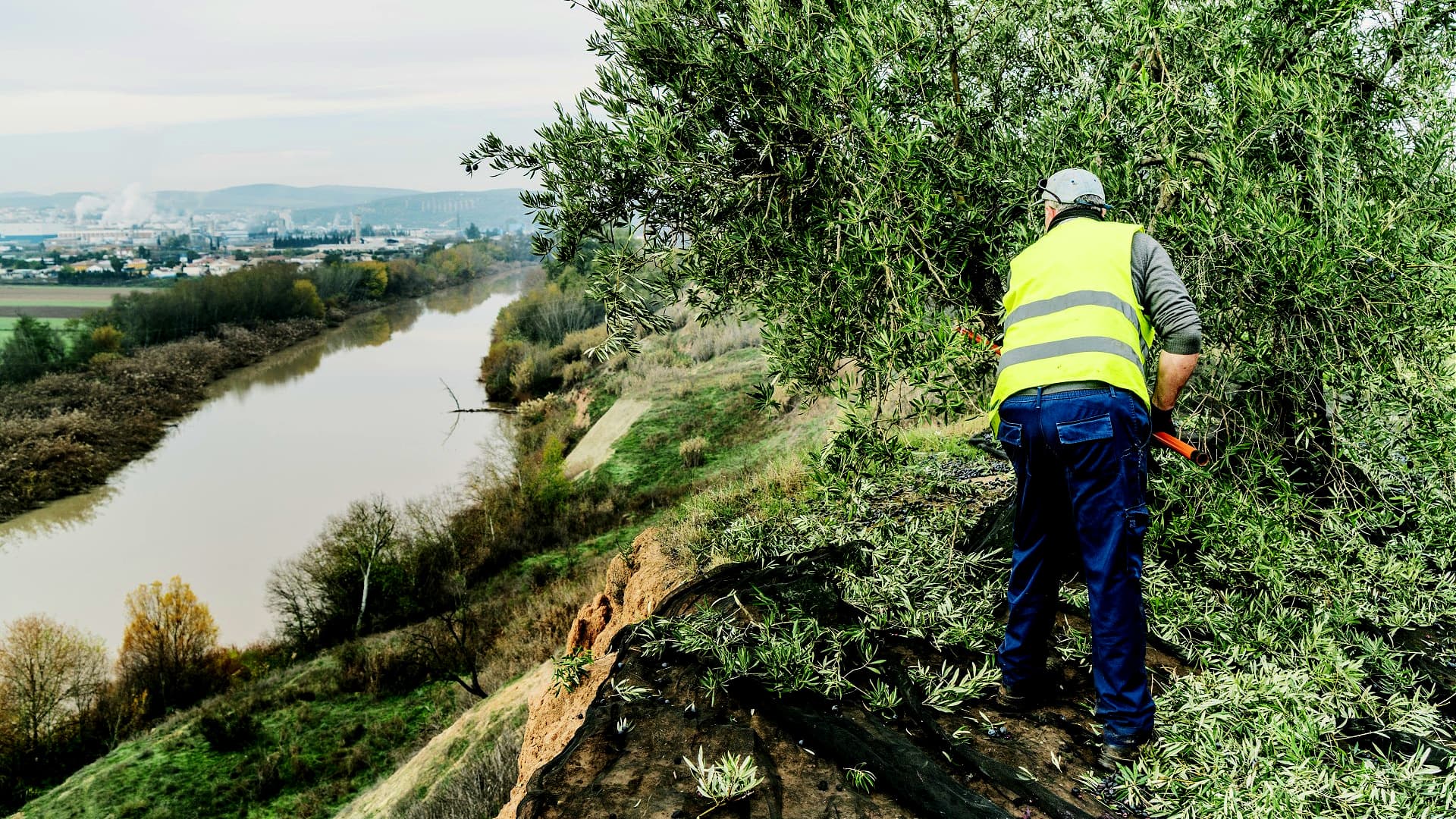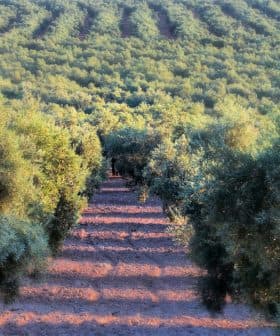Another Poor Harvest in Andalusia Predicted
Low output in the world’s largest olive oil-producing region will continue to push prices higher.
 (Photo: Rafael Alonso Barrua)
(Photo: Rafael Alonso Barrua)  5.8K reads
5.8K readsOlive oil production in Andalusia is expected to reach 550,600 tons in the 2023/24 crop year, a 7 percent increase from last year but 40 percent below the average of the previous four years. The poor harvest in Spain is likely to lead to a further increase in olive oil prices globally, with demand continuing to exceed supply and impacting producers and consumers alike.
According to a preliminary estimate from regional authorities, Olive oil production in Andalusia may reach 550,600 tons in the 2023/24 crop year.
The harvest in the world’s largest olive oil-producing region is expected to rise 7 percent compared with last year’s historic low but would be 40 percent below the average of the previous four crop years.
The harvest is looking very limited, although good quality fruit and oil have been obtained. This year, we face a very complex harvest due to the weather, prices and the market in general.
According to the Spanish Ministry of Agriculture, Fisheries and Food’s preliminary estimate, olive oil production could reach 765,400 tons in the country, 15 percent above last year’s yield but 34 percent below the average of the previous four crop years.
Farmers across Andalusia once again experienced high heat in the spring, followed by a hot and dry summer, reducing the quantity of olives on the trees and hindering oil accumulation.
See Also:2023 Harvest Updates“Fundamentally, it was a slightly better campaign than the previous one,” Carmen Crespo, Andalusia’s agriculture minister, told Agropopular. “But it is true that in these last two campaigns, due to the drought,” have been below average.
However, some provinces in Andalusia are expected to fare better than others.
In Jaén, the largest olive oil-producing province in Andalusia, this harvest is estimated to yield 215,000 tons, 20 percent above last year’s yield but 46 percent below the average of the previous four crop years.
“This year, we have a production outlook, from what we can see in our olive grove, slightly higher compared to 2022/23, but still well below average production in a normal situation,” the quality and production team of Aires de Jaén told Olive Oil Times.

(Photo: Aires de Jaén)
They added that the company produced 40 percent less olive oil in 2022/23 than in an average season. This year’s harvest is set to get underway by the third week of October. The production team said it focuses on an early harvest to maximize quality.
“On the other hand, thanks to the maximum care that our olive grove has received, we are noticing, in the first tests, that the quality of the fruit is superior to that of previous years,” they said.
“The delicate situation of the olive sector this year will be similar to last year due to the drop in production that we continue to maintain in the face of the high demand,” the team added.
Along with Jaén, authorities expect Almería’s production to rebound by 20 percent compared to last year, rising to 13,000 tons, just shy of the 13,232-ton average of the previous four crop years.
Rafael Alonso Barrau, the commercial and export director of Almería-based Oro del Desierto, told Olive Oil Times that the olive harvest is always challenging in the province’s arid microclimate.
“The harvest is looking very limited, although good quality fruit and oil have been obtained,” he said. “This year, we face a very complex harvest due to the weather, prices and the market in general.”
Alonso Barrua cited the unusually hot autumn that southern Spain is experiencing as the main challenge he expects to face as his harvest begins.
“On our farm, we will harvest everything in October, and other farms that we collaborate with for our second brand will do so in November,” he said.
Andalusia Olive Oil Production
2023/24 Prod. Estimate (T) | % Variation 2022/23 | % Variation 2019 – 23 Avg | |
Almería | 13,000 | 20 | -2 |
Cádiz | 7,100 | 5 | -23 |
Córdoba | 143,000 | 0 | -37 |
Granada | 56,000 | -1 | -47 |
Huelva | 7,500 | 1 | -18 |
Jaén | 215,000 | 20 | -46 |
Málaga | 31,000 | 2 | -37 |
Sevilla | 78,000 | 0 | -26 |
Andalusia | 550,600 | 7 | -40.1 |
Spain | 765,362 | 15.3 | -34.4 |
Olive oil production is expected to remain roughly the same in Andalusia’s other six provinces. After Jaén, Córdoba is the second-largest producing province, with this year’s harvest estimated to reach 143,000 tons, about the same as last year and 37 percent below the average of the previous four crop years.
“The harvest will be more or less like the last one, maybe a little more, but not much,” María Carmen Rodriguez Comino, the sales manager of Córdoba-based Almazara de la Subbética, told Olive Oil Times.
She also cited the unusually high temperatures as a challenge that the 8,000-member cooperative was likely to face when the harvest gets underway in a few weeks.
“We have had very high temperatures for a month, more typical of August than October, so it is very difficult to work in the field at almost 40 ºC,” she said. “Of course, these temperatures are not good. If you add high temperatures to the lack of water, we have the problem that the olives begin to dehydrate.”

(Photo: Almazara de la Subbética)
According to Juan Vilar, a strategic consultant for the olive oil sector and producer based in Jaén, the poor harvest in Spain will likely continue pushing olive oil prices further up.
“On a global level, production will reach 2.4 million tons, creating a worse scenario than last year,” he told Olive Oil Times. “It is a worse scenario than last year because we have fewer olive oil stocks than last year, while demand remains at about 2.8 million tons.”
In its autumn 2023 short-term agricultural outlook report, the European Commission said existing olive oil stocks are 12 percent lower this year than last year. With another poor harvest anticipated across Europe, demand is likely to continue outstripping supply, keeping upward pressure on prices.
“The world is missing 400,000 tons of olive oil; the potential demand is much higher than total supply,” Vilar said. “This will mean that you will continue to see price tensions and that consumption will deteriorate more.”
Unless the continent receives plentiful rain this winter, Vilar predicted that prices at origin would continue to rise well into 2024.
In Andalusia, rising olive oil prices at origin often mean producers who buy olives from other growers are also paying more for those olives.
“For the acquisition of olives from contracted farms, it is an adverse situation due to the high purchase price that must be offered,” Alonso Barrua said. “We understand that with a 50 percent drop in production, the price will inevitably double, but financially, it is complex in the current situation and sales at higher prices can suffer quite a bit.”
“The same thing happens throughout the chain where, due to the high price at origin, margins are reduced, and sales will surely do so as well,” he added.
In an average crop year, Andalusia accounts for roughly three-quarters of Spain’s annual olive oil exports. Companies heavily reliant on exports have said they see demand declining as global olive oil prices at retail also rise.
“Price instability and continuous price increases create problems and loss of customers,” Rodriguez Comino said. “Especially abroad where they do not understand the situation well, and it creates loss of clients.”
However, the production team and Aires de Jaén said Spanish consumers remained fiercely loyal, purchasing domestically-produced olive oil despite rising prices.
“Domestic consumption has not been affected; the national market is made up of consumers loyal to this fundamental pillar of the Mediterranean diet,” they concluded. “On the contrary, the new emerging international markets of recent decades have slightly reduced their consumption with rising prices.”
Share this article









